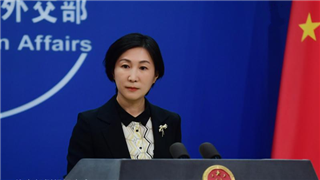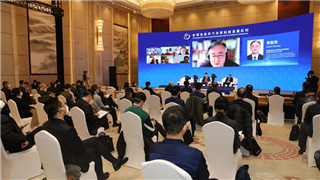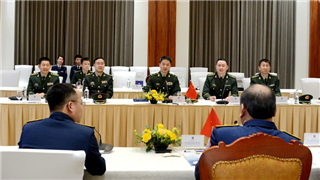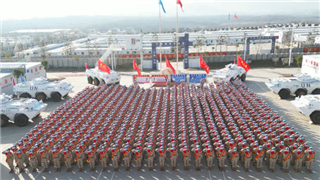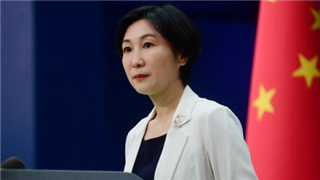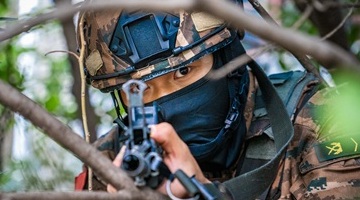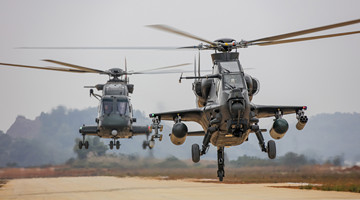By Hai Ning
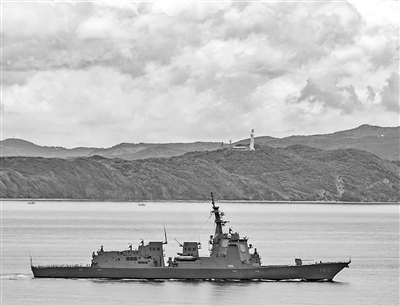
At present, the JMSDF has about 44,000 troops in total, but its total tonnage ranks fourth in the world. On November 21, the latest two Maya-class Aegis air defense destroyers of the JMSDF conducted an anti-missile interception test in the waters off Hawaii. As reported by the Kyodo News Agency, this marked that all the eight Aegis destroyers of the JMSDF have assumed anti-missile capabilities. Subsequently, the Japanese government announced on November 30 that it would purchase up to 500 Tomahawk cruise missiles from the US until around the fiscal year 2027, which would be deployed to equip the JMSDF warships and submarines.
Those abnormal moves taken by the JMSDF have manifested the ambition of the Japanese right-wing forces to break through the established post-WWII system and seek military expansion, which will arouse high vigilance from the international community.
In recent years, the US has continuously loosened the ties regarding to Japan's military development out of its own geostrategic needs. When the US sought to promote the theater missile defense (TMD) system, the JMSDF took the opportunity to improve its air defense and anti-missile capabilities under the banner of sharing the US's worries and burdens. At present, Japan's eight Aegis destroyers have all been equipped with the vertical launch system. Specially, all four escort groups of the JMSDF have been equipped with Akitsuki-class and Asahi-class destroyers with enhanced air defense capabilities, aiming to enable the Aegis destroyers to focus on regional air defense command and anti-missile operations.
The JMSDF has kept breaking through relevant restrictions, and taken all opportunities possible to improve its amphibious, air supremacy and anti-ship capabilities. For example, the modification and multi-purpose-oriented development of the JS Izumo-class helicopter carrier, the introduction and commission of the US-made F-35B multi-role fighters and supporting equipment, and the attempt to introduce quantities of Tomahawk cruise missiles with a range of more than 1,000 kilometers, all these moves aimed to accelerate the JMSDF’s offensive capabilities, which has aroused the vigilance and concern of countries in the region.
The ambition of the JMSDF actually goes beyond those. The Japanese side has confirmed that two large anti-missile interceptors with larger tonnage and stronger power will be built as scheduled in the next development stage, which will be able to launch the US Tomahawk missiles purchased. In addition, there have been voices in Japan advocating the introduction of nuclear-powered submarines like Australia after the US, UK and Australia decided to carry out cooperation in nuclear-powered submarine technology development.
Japan's repeated transgressions are indulged and even encouraged by the US. The US regards Japan as its pawn in implementing its "Great Power Competition" policy and "Indo-Pacific strategy", which serves to open the door to Japan's military development. The Japanese government has planned to complete the revision of the National Security Strategy, the National Defense Program Guidelines (NDPG), and the Mid Term Defense Plan (MTDP) by this year, for which the Japanese side has communicated with the US, including the development of offensive military capabilities that can conduct strikes on other countries' military bases and command institutions, and a substantial increase in the proportion of defense budget to GDP from 1% to 2% within five years. It can be predicted that the JMSDF with obvious defense and aggressive features is expected to receive a larger share.
Japan’s moves to strengthen its armed forces towards a military major power and break away from the post-WWII system reflect the plot of the right-wing political extremists in these years. Those moves are sure to disrupt international relations, worsen the regional and even international security situation, and also arouse strong concern of some people of insight in East Asian countries and even in the US about the Japanese authorities' attempts to restore militarism.
It is worth noting that the latest aircraft carrier of the JMSDF, which has just been refitted from a JS Izumo-class helicopter carrier, was named JS Kaga, exactly the name of a major aircraft carrier of the Imperial Japanese Navy during the attack on Pearl Harbor, and the major aircraft carrier was also refitted from a battleship. The strikingly similar history reminds us to keep alert and learn lessons by reflection. The US, in particular, should avoid leaving the evil unchecked and be alert that Japan's development of armed forces can possibly backfire.
